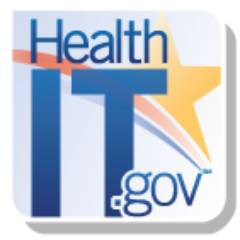 Majority of ambulatory physicians had capability to exchange prescription and laboratory data in 2011
Majority of ambulatory physicians had capability to exchange prescription and laboratory data in 2011
Communication from Peter Ashkenaz, ONC Office of Communications
A new study conducted by the Office of the National Coordinator for Health Information Technology (ONC) researchers, using data from a 2011 survey of physicians, finds that a majority of office-based physicians were able to view lab results and send medication data electronically. The study also finds that one-third of ambulatory care physicians could send and/or receive patient clinical summaries with other providers.
The results of this study are encouraging because they show that a majority of physicians who use electronic health records (EHRs) can electronically exchange test results, medication data and clinical care summaries with patients, all of which are integral to better care coordination and ultimately necessary for universal interoperability,” said Vaishali Patel, an ONC senior advisor and lead author of the study. “As Stage 2 of Meaningful Use moves forward, it will be important to continue monitoring physicians’ exchange capabilities and actual exchange activity to ensure that health information follows the patient wherever they go.”
The ONC study found that the adoption of an EHR was the single strongest predictor of electronic exchange capability for e-prescribing, lab test viewing or ordering, and exchanging clinical summaries. However, results from the study show that not all EHR vendors offer equivalent exchange capability.
The topline findings of the study, published in the American Journal of Managed Care Vol. 19, No. 10, include:
- 55% of all physicians had computerized capability to send prescriptions electronically vs. 78% of physicians with an EHR.
- 67% of all physicians could view electronic lab results vs. 87% of physicians with an EHR.
- 42% could incorporate lab results into their EHR vs. 73% of physicians with an EHR.
- 35% could send an electronic order to a lab vs. 54% of physicians with an EHR.
- 38% could provide clinical summaries to patients vs. 61% of physicians with an EHR.
- 31% percent exchanged patient clinical summaries with another provider vs. 49% of physicians with an EHR.
Results of the study indicate that there was variation among physician exchange capability at the state-level. Physicians in Massachusetts, Minnesota, North Dakota, Oregon, Vermont, Washington and Wisconsin reported the capability to exchange clinical information at rates significantly higher than the national average in at least 4 out of 6 measures of exchange capability examined.
Using data from 2011, the study authors posit that this is a baseline study of physician capability to exchange key types of clinical information. The study authors suggest that the Medicare and Medicaid EHR Incentives Programs and the State Health Information Exchange Program may drive improvement in physician exchange capability. Further, the study also suggests that health-care delivery reforms contained in the Patient Protection and Affordable Care Act, including Accountable Care Organization/shared savings programs, are likely to provide financial incentives to spur even greater health information exchange.
“Specifically, accountable care organizations, which allow entities to share cost savings, may create a business case for HIE by giving providers greater financial incentives to exchange information regarding their patients with each other. Additionally, financial penalties for high hospital readmission rates, for example, may spur greater care coordination between hospitals and ambulatory care providers to better manage transitions of care through the use of care summaries,” ONC researchers wrote.
Data for this study are from the 2011 National Ambulatory Medical Care Survey (NAMCS) Electronic Medical Record Supplement, conducted by the Centers for Disease Control and Prevention’s National Center for Health Statistics as an annual, nationally representative survey of office-based physicians that collects information on the adoption and use of EMR/EHR systems. The target universe of the NAMCS is physicians providing direct patient care in office-based practices, including physicians in community health centers. Radiologists, anesthesiologists, and pathologists are excluded. The overall sample consisted of 4,326 physician respondents, with a 61 percent weighted response rate. The sample size is sufficient to generate state-level and national estimates.
